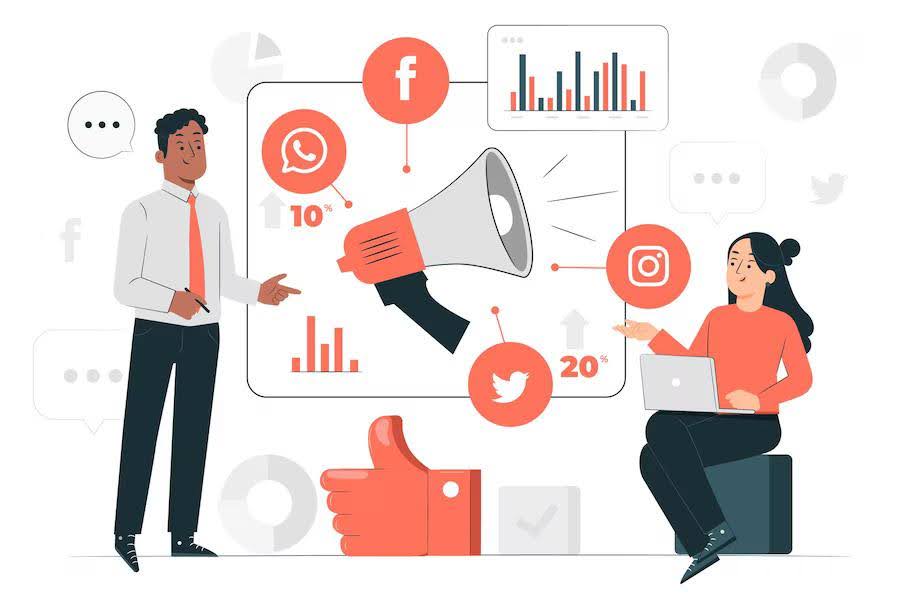Published on: 16 Aug 2023
Reading time: 4 minutes
In today’s time, businesses are getting more and more focused on driving traffic to their websites. This increases their chances of getting enough leads that can be used to achieve higher conversion rates. But driving traffic to the website is only half the battle. Getting more out of existing traffic and leads can propel businesses toward long-term, sustainable growth. This is when conversion rate optimization (CRO) comes into the picture.
What is conversion rate optimization?
Conversion rate optimization (CRO) can be defined as a systematic process of increasing the percentage of conversions using several techniques or implementing different strategies. The first step of this process involves generating ideas for elements on the website or application that can be improved. After that, those ideas are validated through different methods like A/B testing and multivariate testing.
How to calculate the conversion rate?
The conversion rate of a webpage can be calculated by dividing the number of conversions (desired actions taken) by the total number of visitors and then multiplying the result by 100 to get a percentage.
Benefits
Here is how conversion rate optimization can benefit a website or mobile application in several ways:
Better Customer Insights: For every business, it is extremely important to understand its key audience, as this can help convey the brand message in a better way. With conversion rate optimization, it gets easier for brands to find the right customers for their business.
Increased ROI: Increasing conversion rates can help you make the most of your available resources. With the right set of strategies, you will be able to get more conversions, eventually increasing the overall ROI.
Better Scalability: Over time, it is important for a business to scale. In order to succeed, it is important for businesses to increase the audience size of their website or application simultaneously. The best way of doing so is by turning as many visitors as possible into actual customers. With a well-thought-out CRO strategy, you can achieve better scalability without running out of resources or prospective customers.
Enhanced User Experience: This is a well-known fact that offering a good user experience to your visitors makes them come back to you. When they feel that their requirements are being met on your website or application, they are more likely to stick around. By implementing the right website conversion rate optimization strategies, you get a better understanding of what works best for you. This will help you create an enhanced user experience for your visitors.
Best Practices for Conversion Rate Optimization
Being an integral part of digital marketing, conversion rate optimization plays an important role in any website or application. It helps brands reduce their customer acquisition costs to a great extent. As a result, they can get more value from the existing visitors, who are potential customers. By optimizing the conversion rate, it becomes easier to increase per-visitor revenue and acquire more customers, which results in better business growth.
Here are a few good CRO practices:
- Use an eye-catching design for the call-to-action
- Focus on proper CTA placement
- Use language with a sense of urgency to drive sales
- Display more customer testimonials
- Use fewer fields on forms and make them user-friendly
- Use rich media ads to improve the click-through rate and drive more traffic to your website or app
- Consider digital media platforms for advertising
How to Implement a CRO Strategy
Here are the main areas of a website that can greatly benefit from conversion rate optimization:
Homepage: The homepage of a website is among the most important sections of a website. A well-designed homepage helps create a good first impression on visitors. This is also the reason why it is the best place to start conversion rate optimization. You can start by highlighting product links that lead to detailed pages. Other than this, you can also add a free signup button or incorporate a chatbot that provides visitors with basic answers to their questions.
Pricing Page: The pricing page is another section of a website that can benefit from conversion rate optimization. You can use several strategies, such as modifying the pricing intervals (price-per-year vs. price-per-month), highlighting important features associated with each price, etc. Or, you can give visitors the option to reach out to you to get a pricing quote.
Blog Section: The blog section of a website offers a great opportunity to convert a website’s visitors into actual customers. Here, brands can publish useful, informative content related to the industry they are in, which increases their chances of converting readers into potential leads. The best way to do this is to add a catchy call-to-action (CTA) in an article that prompts the reader to take a certain action.
Landing Page: The main aim of creating a landing page is to make visitors take a certain action. This is the reason why these pages have the highest average conversion rate of all different kinds of signup forms. A click-through landing page is a webpage that visitors first land on, and this page has a call-to-action button as the only clickable element. In order to achieve the desired results, it is important to implement the right CRO strategies for such landing pages, with consistent ad messaging being one of them. To create a unique and strong brand image, you should maintain consistency on ads and the landing page.
In simple words, conversion rate optimization is the process of optimizing display ads, landing pages, and the overall website design in a way to achieve a higher conversion rate. Having an effective CRO strategy in place can benefit a business in numerous ways. By adhering to these practices, you can definitely keep your web pages relevant and experience a significant boost in overall productivity.
Schedule a demo




